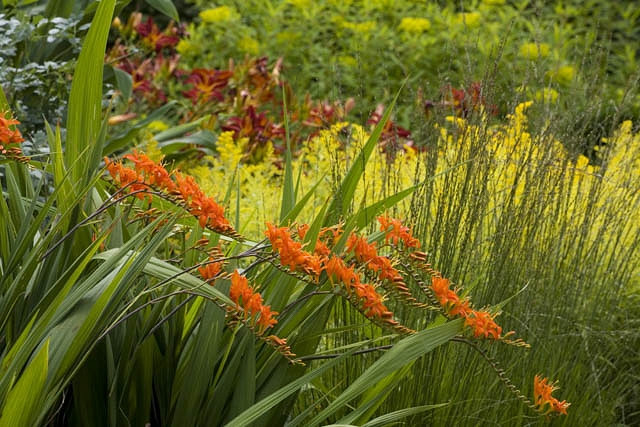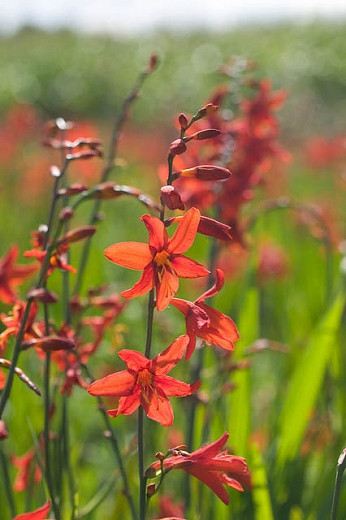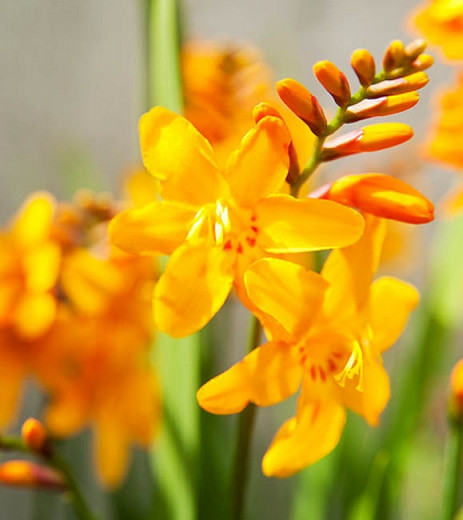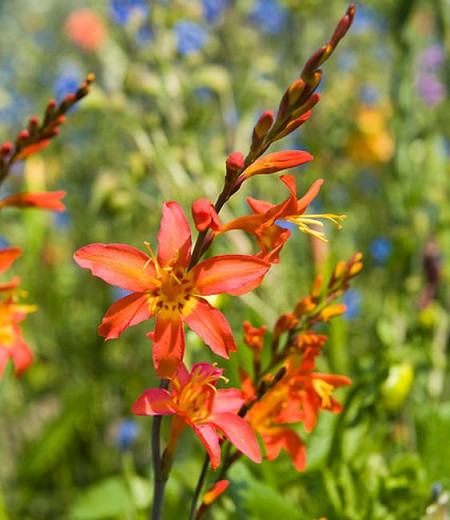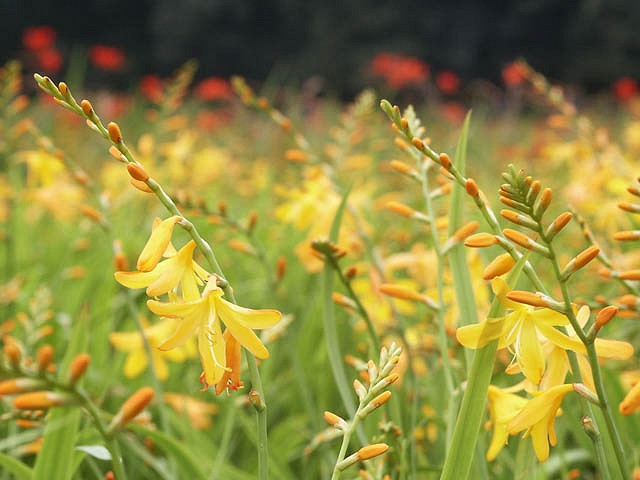Crocosmia (Montbretia)
Extremely showy and exotic-looking, Crocosmia produce decorative clumps of erect sword-shaped leaves and brilliant wands of fiery scarlet, red, orange, and yellow tubular flowers which bloom for 5-8 weeks from mid-summer through mid-fall. Magnets for hummingbirds and butterflies, the vibrant blossoms give way to seedpods that persist into fall and attract hungry birds.
Extremely showy and exotic-looking, Crocosmia produce decorative clumps of erect sword-shaped leaves and brilliant wands of fiery scarlet, red, orange, and yellow tubular flowers which bloom for 5-8 weeks from mid-summer through mid-fall. Magnets for hummingbirds and butterflies, the vibrant blossoms give way to seedpods that persist into fall and attract hungry birds.
- Crocosmia is a genus in the Iridaceae family from tropical and eastern South Africa, which includes 8 species of crocosmia plants as well as many hybrids.
- Crocosmia are great perennials for the late-season garden as they provide weeks of vibrant colors when many other perennials are starting to fade.
- Resembling the foliage of sword-lilies, Crocosmia's narrow, bladed leaves also provide interesting vertical accents in the borders.
- Crocosmia grow up to 1-5 ft. tall (30-150 cm) and begin to produce their lovely blossoms in the summer.
- Crocosmia make excellent border plants, providing color and contrast to the perennial border. They look spectacular in front of green conifers, among dark-leaved dahlias and cannas, or next to blue-flowering plants such as Agapanthus (Lily of the Nile), Aconitum (Monkshood), or Echinops (Globe Thistle). They should be planted in clumps of 12 or more.
- Crocosmia may be grown in containers – make sure you select a large pot with drainage holes.
- Crocosmia are wonderful cut flowers and will last up to 2 weeks in a vase.
- Crocosmia are easily grown in moderately fertile, humus-rich soil that is moist but well-drained. They thrive in full sun or partial shade where they will multiply rapidly and readily.
- Tolerant of summer heat and humidity, Crocosmia are also drought tolerant (once established), salt tolerant, and deer and rabbit resistant.
- Plant crocosmia bulbs (more exactly "corms") in spring. It is recommended to dig up the corms in late fall in hardiness zones 5 & 6 and store them over the winter until the next spring. In other cold areas, add a generous amount of mulch, to protect your plants from freezing.
- Propagate by division or by corm offsets.
- Crocosmias should only be divided every 3-4 years in late fall.
Guide Information
| Hardiness | 5 – 10 |
|---|---|
| Heat Zones | 6 – 9 |
| Climate Zones | 4, 5, 6, 7, 8, 9, 10, 11, 12, 13, 14, 15, 16, 17, 18, 19, 20, 21, 22, 23, 24 |
| Plant Type | Bulbs, Perennials |
| Plant Family | Crocosmia |
| Exposure | Full Sun, Partial Sun |
| Season of Interest | Summer (Mid,Late)Fall |
| Water Needs | Average |
| Maintenance | Low |
| Soil Type | Chalk, Clay, Loam, Sand |
| Soil pH | Acid, Alkaline, Neutral |
| Soil Drainage | Moist but Well-Drained |
| Characteristics | Cut Flowers, Showy |
| Tolerance | Deer, Drought, Rabbit, Salt |
| Attracts | Birds, Butterflies, Hummingbirds |
| Landscaping Ideas | Banks and Slopes, Beds and Borders, Patio and Containers |
| Garden Styles | City and Courtyard, Coastal Garden, Informal and Cottage |

